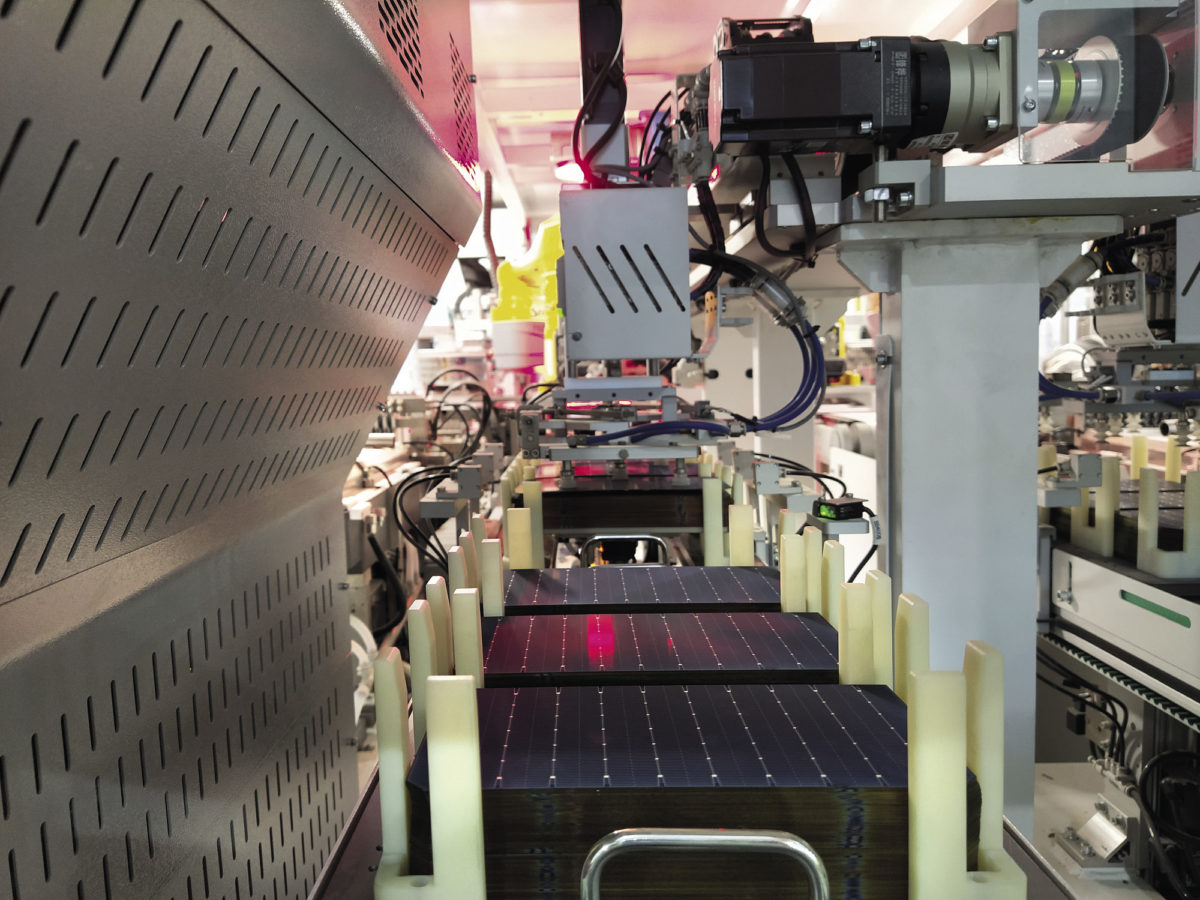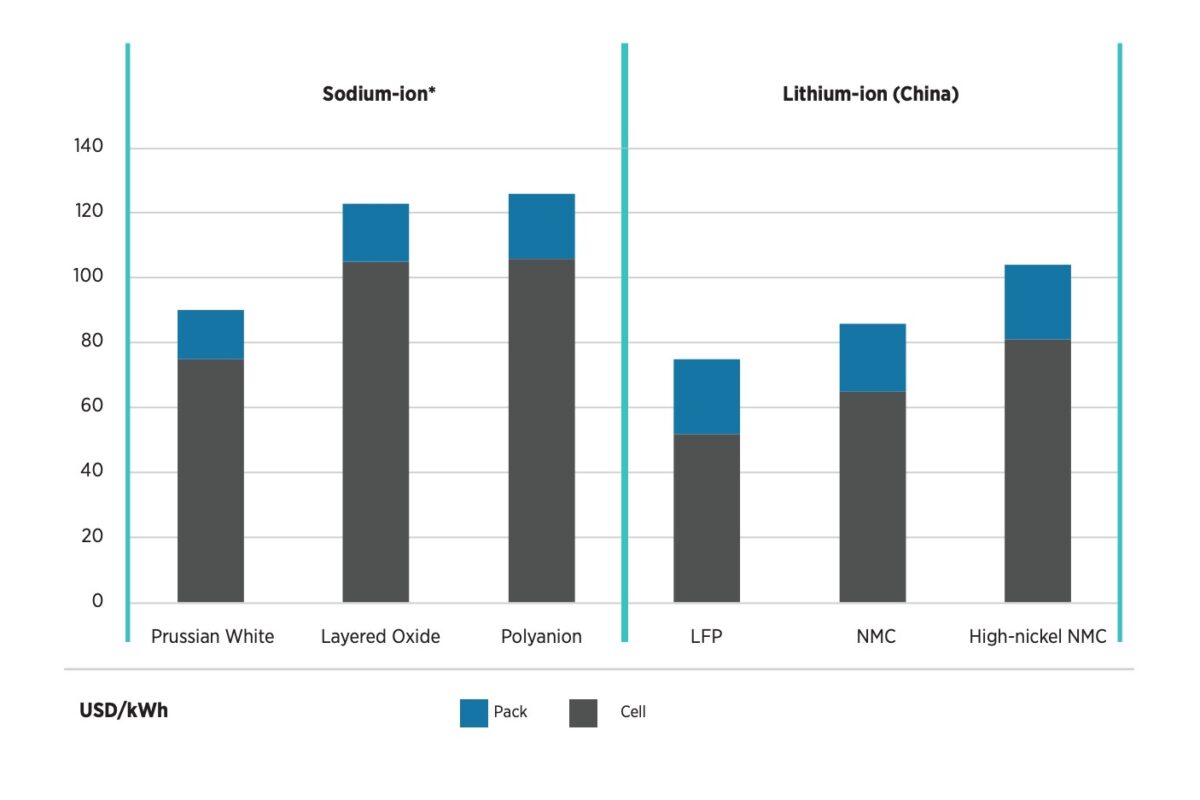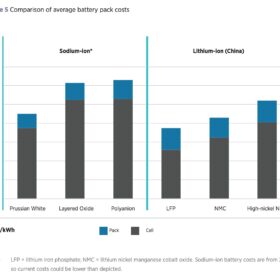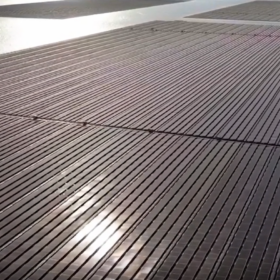India’s Goods and Services Tax (GST) Council has announced a reduction in the GST rate on solar cells—whether or not assembled into modules—from the current 12% to 5%. The revised rates will take effect from September 22.
The tax cut is expected to make solar cells and modules more affordable, driving greater adoption of solar power systems among residential, commercial, and industrial consumers. As costs become more viable, the move is likely to accelerate the transition toward renewable energy.
The GST Council has also reduced the tax rate to 5% for other renewable energy devices and parts used in their manufacture. These include solar power-based devices and generators, solar cookers, solar lanterns or solar lamps windmills, wind-operated electricity generators, waste-to-energy plants and devices, biogas plants, and ocean waves or tidal wave energy devices and plants.
Girishkumar Kadam, senior vice president & group head, ICRA Ltd, expects the rationalisation of GST rates for solar PV modules and wind turbine generators to reduce the capital cost for solar and wind power projects by 5%. This is expected to reduce the cost of generation for solar power projects by 10 paise per unit (kWh) and for wind power projects by 15-17 paise per unit.
Kadam said, “[The move] would reduce the capital cost for under-implementation projects and also likely to reflect in upcoming bids. This in turn will benefit the power distribution companies in the form of lower power purchase cost, going forward.”
The decision has been widely welcomed by renewable energy developers and manufacturers.
Ashish Khanna, CEO, Adani Green Energy Ltd, said, “As India’s largest renewable energy company, we wholeheartedly welcome this visionary policy step, which marks a significant milestone in our nation’s journey toward achieving the target of 500 GW of non-fossil fuel capacity by 2030. This progressive move will not only accelerate India’s transition to a low-carbon economy, but will make clean energy more affordable and accessible to millions. By reducing the input cost of developing clean energy projects and improving project viability, it will unlock new opportunities for growth and innovation. This is a defining moment for our sector.”
Amit Paithankar, CEO and Whole-time Director, Waaree Energies Ltd, said: “The GST rationalization reflects the government’s commitment to India’s clean energy transition. The reduction of GST on renewable energy devices and equipment to a uniform 5% will lower project costs and accelerate the capacity addition needed to meet India’s clean energy targets. It also sends a strong signal to investors, improving the financial viability and attractiveness of the renewable energy sector.
“Moreover, this development will directly help reduce the overall cost of solar modules. While the exact reduction will depend on project specifications and configurations, customers can expect a tangible decrease in module prices, further strengthening the case for solar adoption. The move will also help expand solar adoption in households across the country, supporting the implementation of the PM Surya Ghar Yojana.”
Addressing potential concerns, Paithankar said, “While the new rate may temporarily increase the issue of inverted taxation, we are confident that the government’s focus on faster Input Tax Credit (ITC) refunds will help address this. Overall, these GST reforms will reduce the cost of green power for consumers, strengthen the domestic manufacturing value chain, create jobs, and promote energy independence.”
Sameer Gupta, chairman, Jakson Group, hailed the GST reduction on RE equipments as a landmark decision by the GST Council. He said, “This move will lower input costs for project development and module manufacturing, strengthen the economic viability of renewable projects, and make solar power more affordable for households, businesses, and farmers across the country. We see this reform not only as a near-term boost to project viability, but also as a long-term enabler of domestic manufacturing. While India has achieved significant milestones in solar module production, reliance on foreign imports for upstream components continues. Rationalising GST pricing creates a more competitive environment that encourages investment and supports the growth of a robust ‘Made in India’ solar supply chain.”
Gyanesh Chaudhary, chairman and managing director, Vikram Solar, said, this set of reforms goes beyond cost correction and reflects strategic intent. It strengthens India’s clean energy value chain and reinforces our position as a global leader in sustainable growth. “Lowering project costs will accelerate solar adoption across sectors and bring clean energy closer to millions of homes and businesses. It also comes at a crucial moment, as India, already the world’s third-largest producer of wind and solar power, aims to unlock the renewable energy target of 500 GW by 2030. For this ambition to be realised, a robust domestic manufacturing ecosystem is essential. The GST cut gives a clear signal in support of Atmanirbhar Bharat, encouraging investment in solar cell and module production and reinforcing our path to self-reliance,” he added. “Equally significant is the reduction in tax on non-lithium-ion batteries. As India increases its renewable energy generation, building scalable, long-duration energy storage solutions is critical for grid stability and round-the-clock power.”
Laxit Awla, Director & CEO (Power Business), SAEL Industries Ltd, expects GST reduction to substantially lower production costs and improve the commercial viability of renewable projects, thereby promoting greater adoption and market expansion across the sector. He added, “The government’s continued focus on promoting domestic manufacturing and nurturing a robust renewable energy ecosystem is evident through such measures. For the renewable energy sector, this revision is expected to bring down costs across the value chain, making technologies more accessible and affordable for both consumers and businesses. This will further catalyze faster adoption, attract new investments, job creation, and significantly boost India’s renewable energy capacity.”
Hiten Parekh, president – global sales, GREW Solar, said, “Reducing GST rates on renewable energy components by GST Council is a transformative step for the sector. By lowering the cost of solar parts, it eases barriers for both established developers and emerging players. More importantly, it makes clean energy more accessible while strengthening India’s solar manufacturing ecosystem by channeling demand into domestic supply chains and creating new avenues for employment across the value chain. This move will accelerate job creation, fuel energy independence, and drive long-term sustainable growth for the country.”
Dhruv Sharma, CEO, Jupiter International Ltd, said, “The GST Council has taken a historic step to reduce taxes on renewable energy components to 5% from 12%. This move not only brings down the cost of solar and clean energy solutions but also energizes the entire ecosystem—manufacturers, developers, and end users alike. It will also help in India’s clean energy momentum and make sustainable solutions more accessible to millions.”
Preeti Bajaj, MD & CEO, Luminous Power Technologies, said, “By lowering the GST on renewable energy devices to 5% and on non-lithium batteries to 18%, this reform makes clean energy and storage solutions more affordable and accessible for households and businesses. This is a powerful move that will not only boost demand and accelerate the adoption of solar energy but also strengthen grid stability and long duration storage for renewable power.”
Vipin Tiwari, corporate strategy manager, AXITEC Energy India, said, “The GST cut is a welcome move to make clean energy more affordable, particularly for domestic consumers not registered under GST. This reduction eases the financial burden on households, supports the PM Surya Ghar Yojana, and is expected to accelerate solar adoption.”
Amit Jain, CEO & Country Manager India, MD Renewables & Batteries India & South-East Asia, ENGIE, said, “The GST Council’s decision to reduce the GST rate on renewable energy equipment to 5% marks a significant step forward in India’s clean energy journey. As a global energy utility committed to accelerating the energy transition, ENGIE India welcomes this policy shift. This progressive move will not only encourage renewable energy players in India by strengthening liquidity across the renewable value chain but also fast-track the execution of green projects. This decision will also potentially help in attracting greater investments in clean technologies and bolster India’s competitiveness in renewable energy and reinforce the country’s leadership in the global energy transition.”
Ratul Puri, Chairman, Hindustan Power, said this reform reaffirms the government’s commitment to building a robust and future-ready power ecosystem. He added, “As an integrated energy company with a strong presence in both transitional and renewable energy generation, we believe this step will not only ease operations across the value chain but also strengthen India’s transition towards sustainable energy. While the tax rate on coal has been raised from 5% to 18%, the overall impact will be minor as the existing compensation cess of Rs 400 per tonne has now been subsumed within the GST rate. However, to support the transition from fossil fuels to non-fossil sources, the reduction of GST on renewable sector products from 12% to 5% is truly transformative. It will further enhance renewable energy capacity and accelerate the adoption of green technologies such as biogas, solar cells, green hydrogen and battery energy storage systems.”
Sumant Sinha, Founder & CEO, ReNew, commended the GST Council “for its transformational and forward-looking reforms that strengthen both Ease of Doing Business and Ease of Living.” He said, “The reduction of GST rates on solar equipment to 5% from 12% will lower electricity costs, enhance industrial competitiveness, and accelerate India’s clean energy transition. Removal of the compensation cess on coal and merging it into a higher GST rate of 18% will also effectively bring down the costs of thermal power. Broader rationalisation will further stimulate domestic consumption and encourage export sectors. This marks a decisive step toward a more efficient, resilient, and inclusive economy.”
Rajiv Ranjan Mishra, MD, Apraava Energy, said, “The GST cut is expected to encourage domestic manufacturing under the Government’s Make in India mission and provide a much-needed boost to renewable capacity and further accelerate India’s RE goals. Tariff competitiveness and lower project costs will make the clean energy an even more attractive option for investors, discoms and commercial and residential consumers.”
Siddharth Bhatia, MD, Oyster Renewable Energy (a hybrid IPP player), said, the GST cut “significantly lowers the input costs for project development and module manufacturing, thereby enhancing the overall economics of renewable energy projects. This tax rationalization is particularly timely as it coincides with India’s ambitious targets for domestic manufacturing self-reliance under the Atmanirbhar Bharat initiative and the ongoing efforts to scale up green hydrogen mobility solutions. Lower GST rates will most definitely stimulate project pipeline growth by making renewable power generation more cost-competitive, thereby fostering stronger demand from distribution companies and corporate buyers alike.”
Bhatia said that addressing the inverted duty structure with expedited refund mechanisms will streamline liquidity for manufacturers and developers, easing cash flow allowing faster capacity expansion.
Shreya Mishra, Co-Founder & CEO, SolarSquare, said, “The GST reduction on solar modules and components from 12% to 5% is a big win for homeowners planning to switch to solar. We applaud the government for this progressive step, as lower taxes will make rooftop solar more affordable, shorten payback periods, and boost monthly savings for families. This should accelerate adoption, particularly among middle-income households that were earlier holding back due to high upfront costs. Over the next 6–12 months, we anticipate stronger interest in rooftop solar, reflected in higher enquiries and installations as affordability improves.”
This content is protected by copyright and may not be reused. If you want to cooperate with us and would like to reuse some of our content, please contact: editors@pv-magazine.com.









3 comments
By submitting this form you agree to pv magazine using your data for the purposes of publishing your comment.
Your personal data will only be disclosed or otherwise transmitted to third parties for the purposes of spam filtering or if this is necessary for technical maintenance of the website. Any other transfer to third parties will not take place unless this is justified on the basis of applicable data protection regulations or if pv magazine is legally obliged to do so.
You may revoke this consent at any time with effect for the future, in which case your personal data will be deleted immediately. Otherwise, your data will be deleted if pv magazine has processed your request or the purpose of data storage is fulfilled.
Further information on data privacy can be found in our Data Protection Policy.